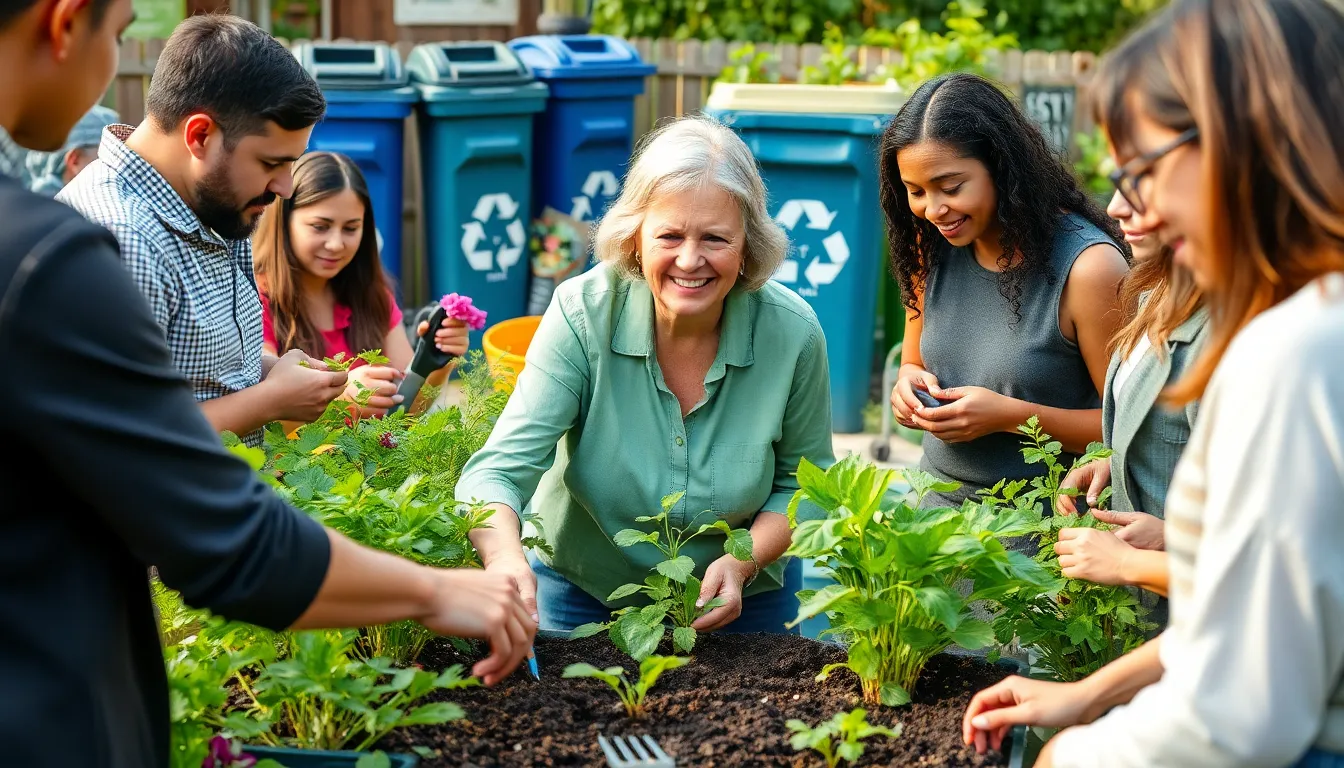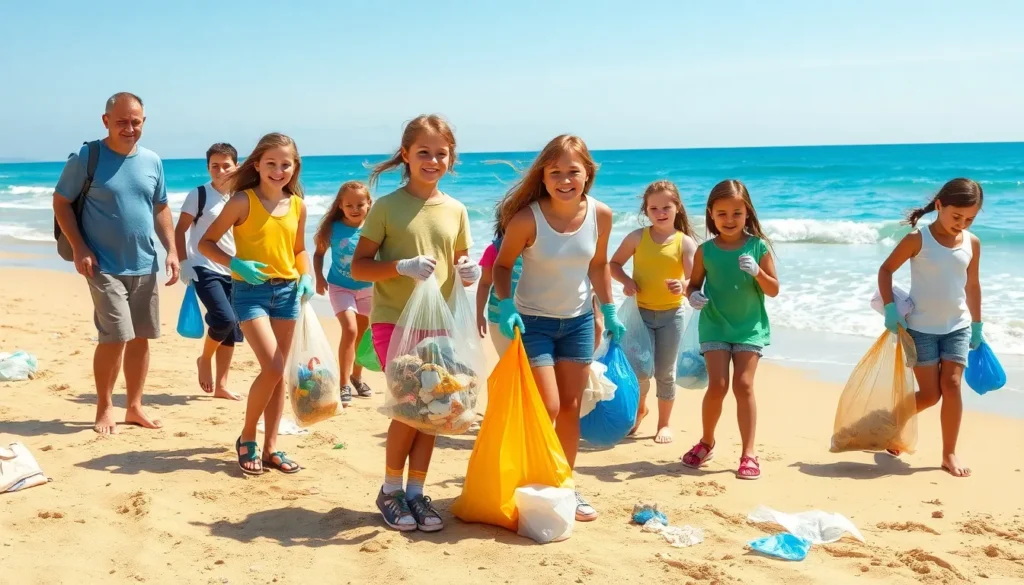Table of Contents
ToggleIn a world where plastic straws are the new villain and climate change is the ultimate plot twist, conservation education steps into the spotlight like a superhero in a spandex suit. It’s not just about saving the whales or hugging trees—though those are pretty cool too. It’s about empowering individuals to make smarter choices and understand their impact on the planet.
Overview of Conservation Education
Conservation education focuses on instilling knowledge about environmental issues and fostering awareness of the planet’s ecological state. Its primary goal encompasses empowering individuals, enabling them to comprehend their ecological footprint. Awareness among communities about local ecosystems forms a core aspect of this educational initiative.
Programs aim to educate all age groups about biodiversity and sustainable practices. Elementary schools, universities, and community organizations frequently implement these programs. Activities often include hands-on experiences, such as wildlife excursions, beach cleanups, and workshops, which encourage participants to engage directly with nature.
Curricula in conservation education commonly address the critical issues faced by ecosystems today. Climate change, habitat loss, and pollution serve as significant topics within various educational frameworks. Individuals learn to connect their behaviors with broader environmental outcomes, fostering a sense of responsibility for ecological stewardship.
Success in these educational programs results in increased community involvement in conservation efforts. Local initiatives often reflect the knowledge gained through conservation education by directing efforts towards sustainable practice adoption. Awareness campaigns targeting specific behaviors, like reducing plastic usage, demonstrate measurable impacts on local environments.
Stakeholders, including educators and conservation organizations, play vital roles in advancing conservation education. Collaboration between schools and community organizations enhances resource distribution and knowledge sharing. This integration creates a comprehensive approach to pushing for environmental change and sustainability advocacy.
Conservation education proves effective in cultivating informed citizens dedicated to environmental preservation. As knowledge spreads, communities can effectively address environmental challenges while inspiring subsequent generations.
Importance of Conservation Education

Conservation education plays a crucial role in equipping individuals with the knowledge needed to address environmental challenges. By fostering a culture of awareness, it encourages proactive engagement with ecological issues.
Environmental Awareness
Environmental awareness forms the foundation of conservation education. It helps individuals understand the interconnectedness of ecosystems and the impact of human actions. Programs target various demographics, focusing on climate change, habitat loss, and pollution. Engaging activities like wildlife excursions enhance learning experiences, ensuring that participants grasp the significance of biodiversity. Knowledge gained during these programs often translates into positive behavioral changes, forging a stronger connection between individuals and the environment.
Promoting Sustainable Practices
Promoting sustainable practices becomes a key focus of conservation education. Workshops and community initiatives encourage individuals to adopt eco-friendly habits in daily life. Through hands-on activities, participants learn about waste reduction, recycling, and energy conservation. Critical discussions about natural resource management emerge, empowering individuals to make informed decisions. Successful implementation of sustainable practices fosters resilience within communities, ensuring a collective commitment to protecting the environment for future generations.
Methods of Conservation Education
Conservation education employs diverse methods to effectively communicate environmental issues. Through various strategies, it aims to engage individuals in understanding their ecological impact.
Formal Education Approaches
Formal education utilizes structured curricula within schools and universities. Educators integrate environmental science into existing subjects, ensuring students comprehend ecological principles. Workshops and presentations often accompany this method, providing interactive experiences. Certifications in environmental studies can enhance students’ knowledge and skills. Universities may offer undergraduate and graduate programs focused on sustainability, equipping graduates for careers in conservation. Such formal approaches result in a stronger foundation for addressing ecological challenges.
Community-Based Initiatives
Community-based initiatives engage people directly within their local environments. Local organizations frequently host events like tree planting, clean-up drives, and conservation workshops. These activities foster hands-on learning and encourage collaboration among community members. Partnerships with schools amplify outreach efforts, enhancing awareness of local environmental issues. Volunteers play a crucial role, witnessing firsthand the impact of their contributions. As individuals participate, they develop a personal connection to conservation efforts, promoting sustainable practices in their daily lives.
Challenges in Conservation Education
Conservation education faces several challenges that hinder its effectiveness in promoting environmental stewardship. Addressing these barriers is essential for fostering a sustainable future.
Misconceptions About Conservation
Misunderstandings about conservation often undermine its goals. Many individuals view conservation solely as animal rescue, ignoring bigger environmental issues like climate change and habitat loss. Various myths, such as the belief that conservation efforts are anti-development, create resistance towards sustainable practices. Clarifying these misconceptions through targeted messaging can help shift public perception and increase engagement in conservation initiatives. Educational programs that highlight the interconnectedness of ecosystems further break down these barriers, allowing communities to appreciate the broader implications of their actions.
Funding and Resource Limitations
Funding shortages frequently impede conservation education efforts. Limited financial resources restrict program development and outreach, making it difficult to reach diverse communities. Many organizations depend on grants or donations, which are often inadequate. Additionally, insufficient staff training can lead to subpar educational experiences. Collaborations with local governments and private sectors can alleviate these issues, providing necessary support and resources. Establishing partnerships can enhance program visibility and advocate for sustainable funding models, ensuring robust conservation education for all.
Future of Conservation Education
Anticipated developments in conservation education focus on integrating innovative technologies. Virtual reality provides immersive experiences that allow learners to explore ecosystems without leaving their classrooms. Gamification strategies engage students through interactive platforms, encouraging participation and fostering a sense of responsibility towards the environment.
Collaborative efforts between educational institutions and environmental organizations shape curricula, ensuring relevance and practicality. Partnerships enable resource sharing, enhancing program diversity and reach. Inclusion of diverse voices and perspectives strengthens educational approaches, creating a holistic understanding of environmental issues.
Increased emphasis on policy advocacy aims to elevate conservation education’s impact. Advocacy training equips individuals with skills to influence decision-makers and drive systemic change. Well-informed citizens can challenge unsustainable practices, contributing to a more significant movement toward environmental justice.
Local communities also play a crucial role in this evolution. Grassroots initiatives encourage community ownership of conservation efforts, fostering resilience against environmental challenges. By implementing localized programs, individuals are more likely to invest in sustainable practices relevant to their surroundings.
Funding models continue to adapt as well. Crowdfunding and grants from private foundations supplement traditional funding sources, ensuring program sustainability. These financial avenues allow for program expansion and innovative educational initiatives.
Encouraging an interconnected approach promotes climate literacy across all educational levels. Environmental issues are increasingly recognized as cross-disciplinary subjects, linking diverse fields such as science, economics, and social studies. Emphasis on critical thinking and problem-solving prepares individuals to address complex environmental challenges effectively.
Lastly, ongoing evaluation and feedback mechanisms will enhance education quality. Assessments will help to identify successful strategies and areas for improvement, ensuring programs meet evolving needs. Continuous refinement supports the overall goal of fostering a generation that actively engages in conservation efforts.
Conservation education plays a pivotal role in shaping a sustainable future. By empowering individuals with knowledge and fostering a sense of responsibility, it cultivates a generation dedicated to protecting the environment. Engaging programs that connect people directly with nature inspire positive behavioral changes and community involvement.
As conservation education evolves, integrating innovative technologies and collaborative efforts will enhance its impact. Addressing misconceptions and securing funding will further strengthen these initiatives. Ultimately, a comprehensive approach to conservation education not only addresses immediate environmental challenges but also inspires lasting change for future generations.




